A research paper titled “Experimental Limits on Solar Reflected Dark Matter with a New Approach on Accelerated Dark Matter-Electron Analysis in Semiconductors” was published in Physical Review Letters (Phys. Rev. Lett. 132, 171001, 2024) on April 22. The paper proposed a velocity components analysis (VCA) that solves the problem faced by semi-conductor detectors when analyzing accelerated DM, and realizes swift analysis of electron interacting with accelerated DM with random velocity distributions. Based on the VCA method and the experimental data from CDEX-10 with a total exposure of 205.4 kg·day, CDEX (China Dark matter EXperiment) collaboration, led by the Department of Engineering Physics of Tsinghua University, performed analysis on solar reflected dark matter (SRDM)-electron interaction. No dark matter signal is observed in the analysis, and the most stringent limits in mass range lower than 0.01 MeV and the mass range lower than 0.1 MeV are presented in the heavy and light mediator scenario.
Dark matter (DM) model can well explain current astronomical and cosmological observations, and the existence of dark matter is generally accepted by the modern physics world. Searching for DM, and further revealing the nature of DM is of great significance for our understanding of the origin of matter and the evolution of the Universe. In recent decades, direct detection experiments based on different detector techniques are widely carried out.
An important approach to probe light DM is via DM-electron interaction analysis. The mass of electron is lighter than nucleus, and can extract energy from light DM more efficiently, which can significantly improve the sensitivity of detectors on light DM. In 2022, CDEX collaboration performed DM-electron analysis on HPGe detectors with a DM-electron interaction calculation technique that combines the first-principle calculation method using density-function-theory (DFT) and semi-analytic approximation methods, and presented leading DM-electron results, which were also published on Physical Review Letters (Phys. Rev. Lett. 129, 221301, 2022).
Another important approach to probe light DM is through Accelerated DM analysis. DM particles can be accelerated by high energy celestial bodies and gain energy. If these DM particles can reach the detector, then by probing these particles, the sensitivity is enhanced. Typical Accelerated DM includes Cosmic Ray Accelerated DM, Solar Reflected DM, DM accelerated by Blazars, etc. SRDM essentially originates from SHM accelerated by heated plasma in the Sun. The advantage of such SRDM model comparing with some other DM models is that no extra assumption is needed.
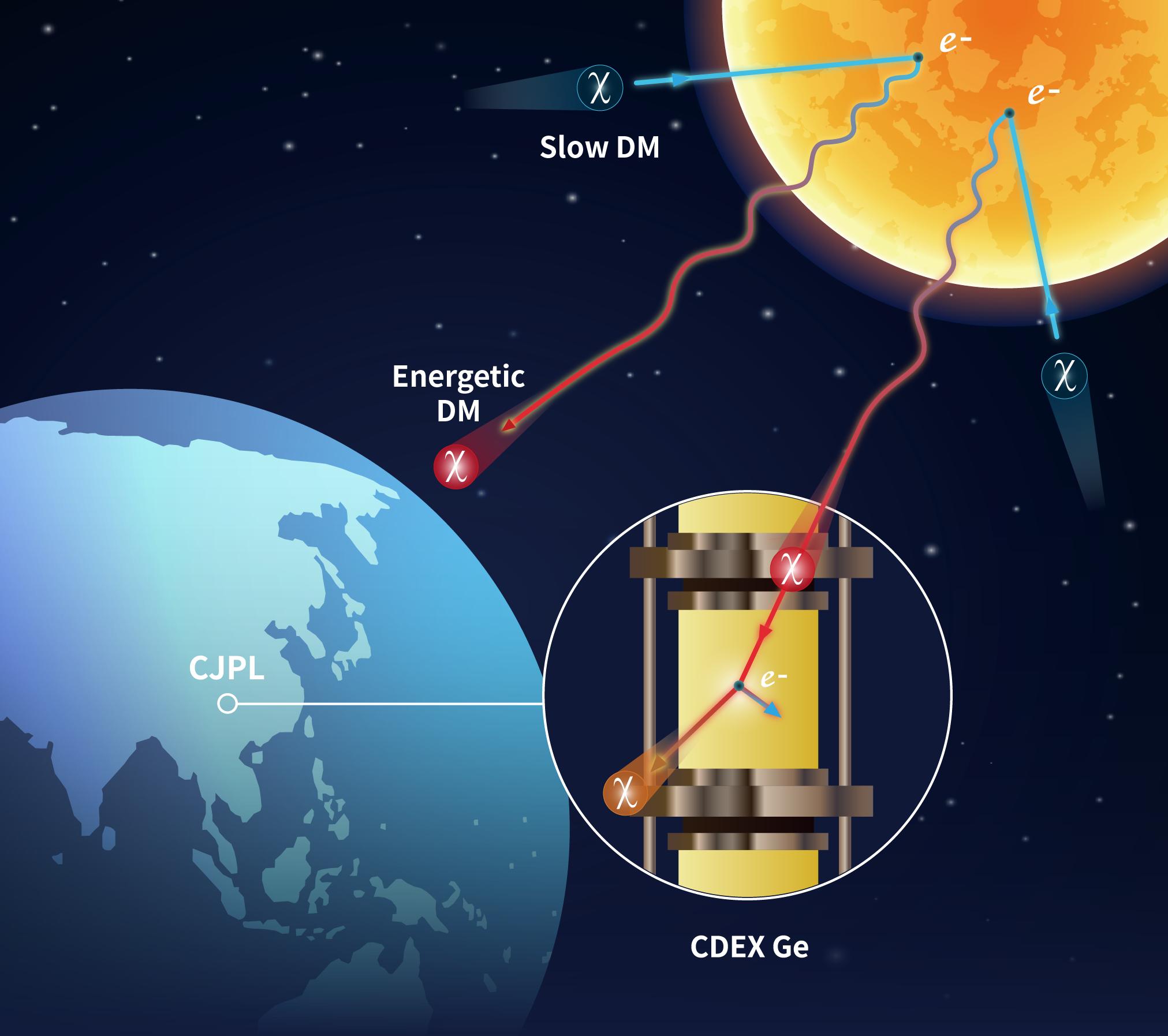
Fig. 1 The mechanism of SRDM. Dark matter particles enter the Sun and get accelerated by high-energy electrons. Accelerated DM particles are reflected to the Earth and detected by HPGe detectors.
When analyzing Accelerated DM via DM-electron interaction, there remains some issue: the velocity distributions of Accelerated DM models vary a lot, and can even be nonanalytical, which means we cannot use common analytical method, but have to perform rather complex numerical calculations. These complex calculations make the analysis unaffordable. To solve this problem, CDEX collaboration proposed a VCA method which calculates contributions from different velocity bins and realized the swift analysis of accelerated DM-electron interaction on semi-conductor detectors.
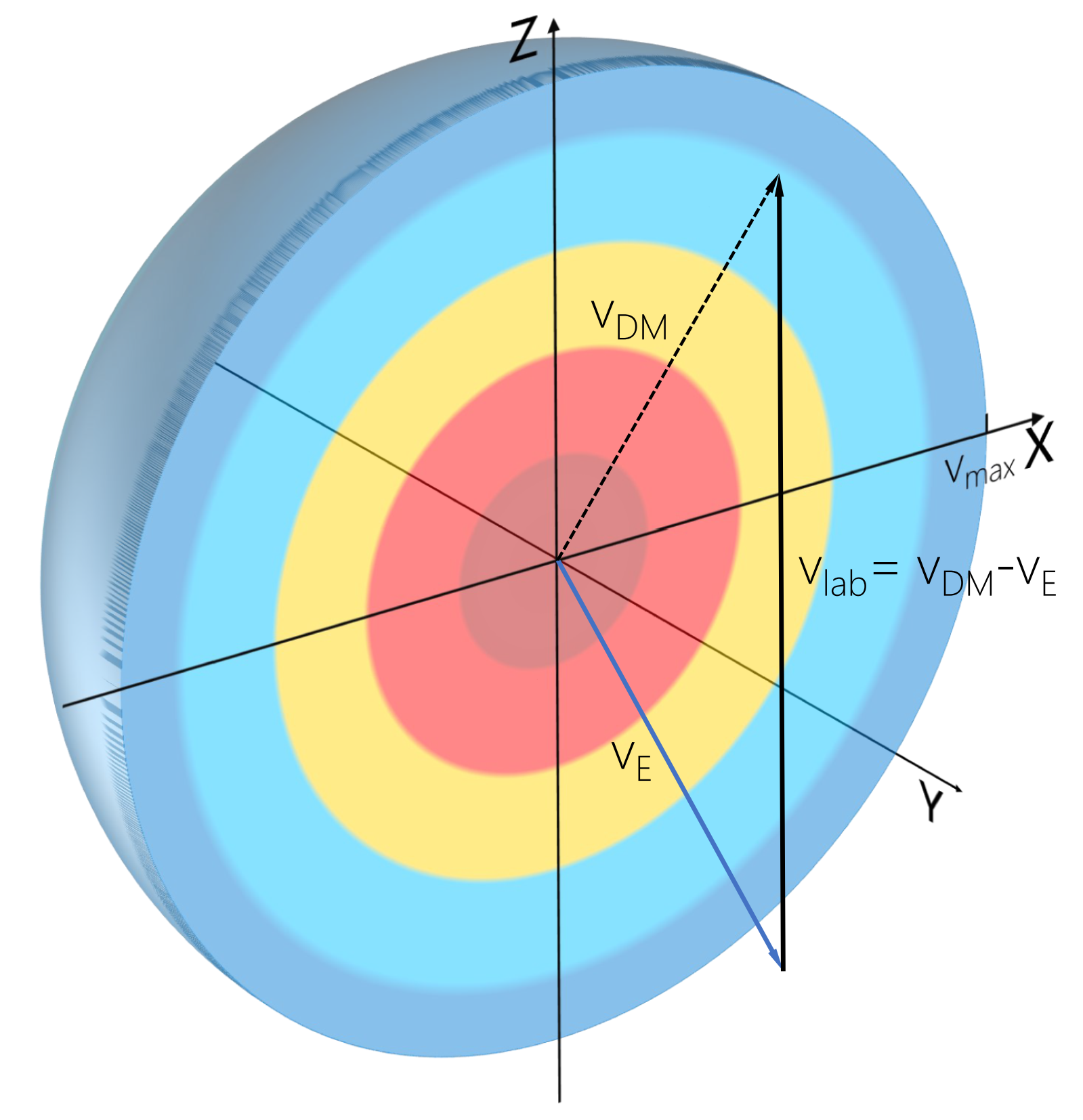
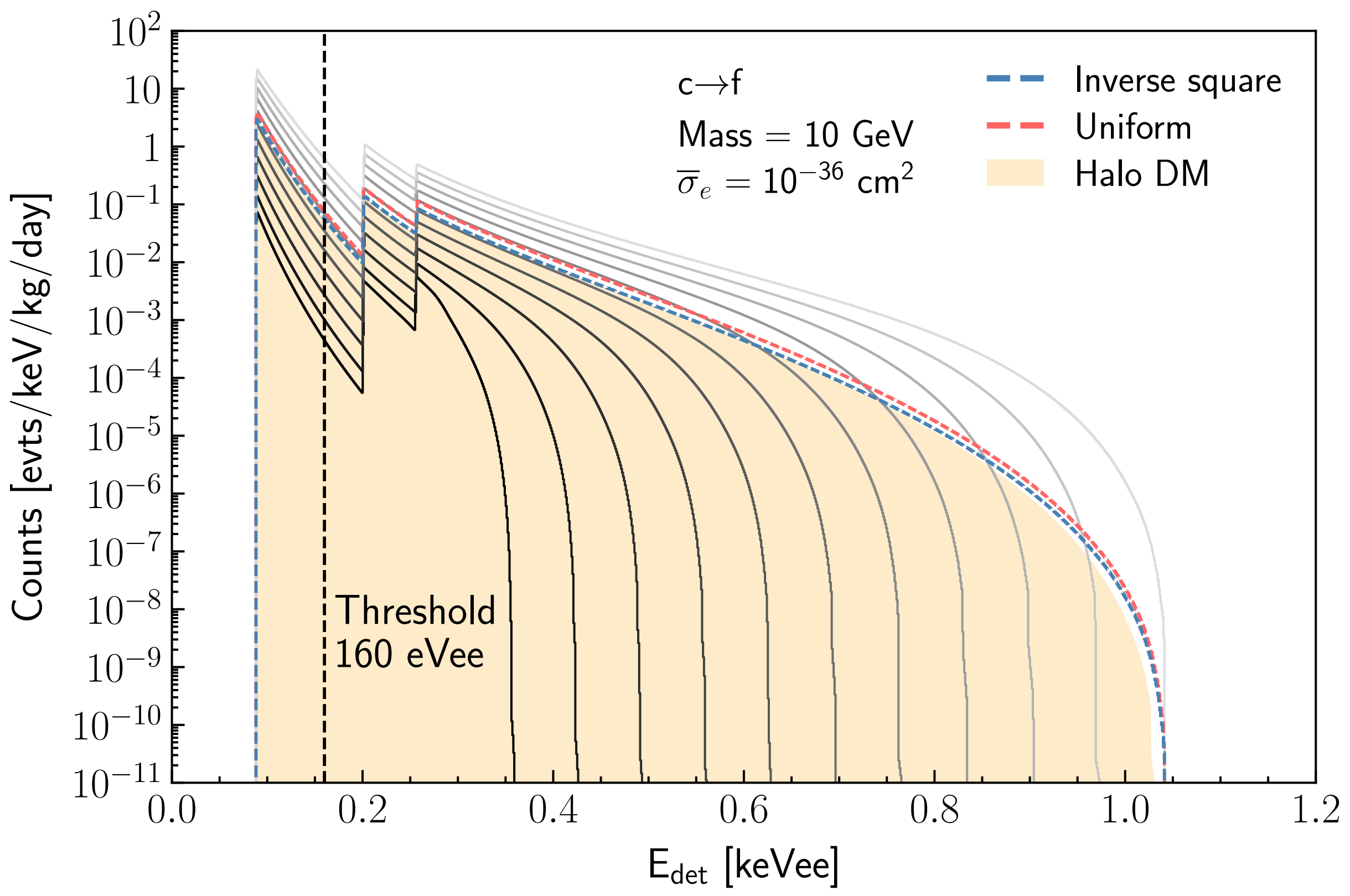
Fig. 2 Left: Demonstration of VCA method. Right: Energy spectrum of SHM model reconstructed by the VCA method, and the reconstructed result is close to the original result.
Based on the VCA method, CDEX collaboration performed SRDM-electron analysis using the experimental data from CDEX-10 with a total exposure of 205.4 kg·day. No DM signal is observed in the analysis. The most stringent limits in mass range lower than 0.01 MeV in the heavy mediator scenario, and the mass range lower than 0.1 MeV in the light mediator scenario are presented, respectively.
This work is of great value: first, the novel VCA method proposed by this work enables us to bypass the obstacle of massive calculations in accelerated DM analysis; secondly, the leading results presented by this work based on the CDEX-10 data demonstrates the vast potential of HPGe detectors in probing accelerated DM; finally, the VCA method is highly extendable, and can be applied to other accelerated DM models and other semi-conductor detector based direct detection experiments.
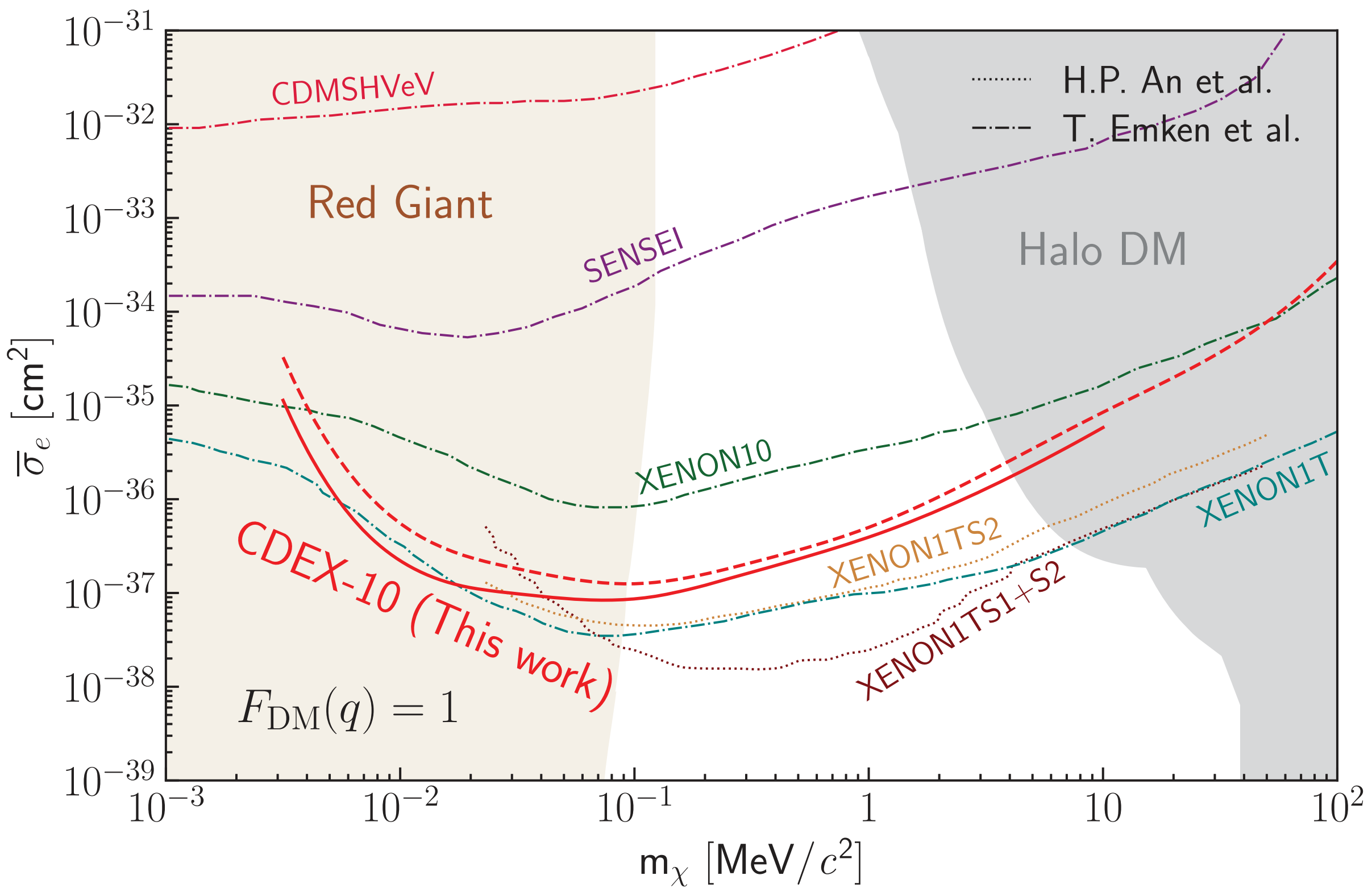
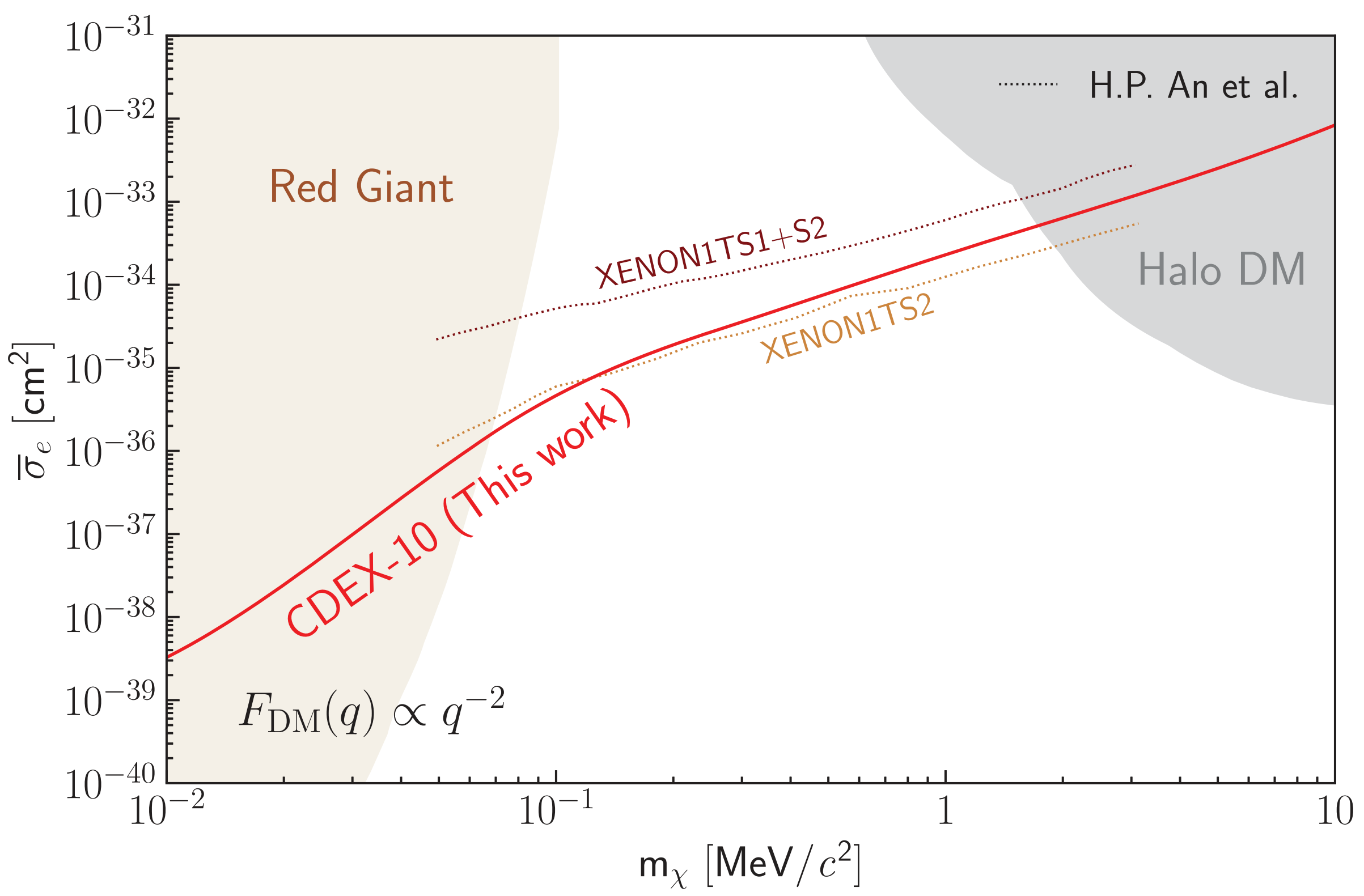
Fig. 3 SRDM-electron result derived from CDEX-10 experiment. Left: The exclusion line in the heavy mediator scenario. Right: The exclusion line in the light mediator scenario.
Zhenyu Zhang, Ph.D. students in Department of Engineering Physics, is the first author of this paper. Assistant Prof. Litao Yang and Prof. Qian Yue are the co-corresponding authors. This work was supported by the National Key Research and Development Program of China, the National Natural Science Foundation of China, and the Dark Matter Experimental Platform of Tsinghua University.
The original link: https://doi.org/10.1103/PhysRevLett.132.171001
Editor: Li Han

